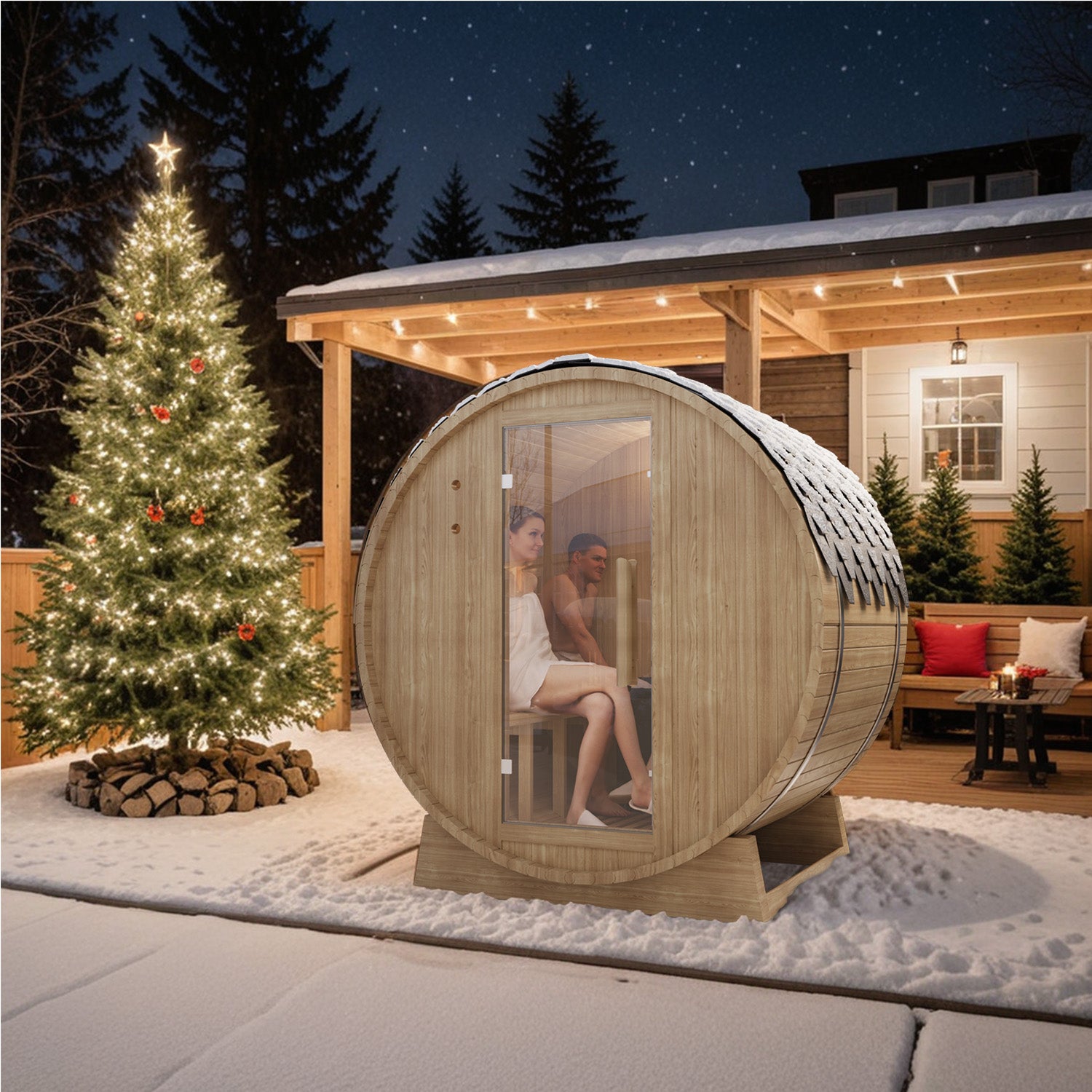Infrared saunas are becoming increasingly popular for relaxation and wellness. But are they completely safe? Here’s what you need to know about the potential risks, benefits, and safe usage tips.
Table of Contents:[hide]
What is an Infrared Sauna and How Does It Work?
An infrared sauna uses infrared light waves to heat your body directly rather than heating the air around you like a traditional sauna. This type of heat penetrates deeper into the skin, promoting relaxation, improved circulation, and detoxification.
Unlike conventional saunas that reach 150°F to 195°F (65°C to 90°C), infrared saunas operate at 110°F to 140°F (43°C to 60°C). This lower temperature makes the experience more comfortable while still encouraging sweating and similar health benefits.
Infrared saunas come in three main types:
-
Near-infrared saunas – Best for skin rejuvenation and wound healing.
-
Far-infrared saunas – Focus on detoxification and deep tissue penetration.
-
Full-spectrum infrared saunas – Combine all wavelengths for a complete experience.
Are Infrared Saunas Safe?
Many people ask, “Are infrared saunas safe?” According to the Mayo Clinic, infrared saunas are generally safe for most healthy adults when used properly. They provide a gentler heat experience compared to traditional saunas, making them accessible for those who can’t tolerate high temperatures.
However, there are some risks of infrared saunas to consider. Overuse or improper use can lead to dehydration, dizziness, or overheating. Individuals with certain health conditions, such as heart disease or low blood pressure, should consult a doctor before using an infrared sauna.
Bottom line: Infrared saunas are safe when used responsibly, but they are not risk-free.
Infrared Sauna Benefits and Disadvantages
Like any wellness tool, infrared saunas come with advantages and disadvantages.
Benefits
-
Improved Circulation – The heat widens blood vessels, enhancing blood flow.
-
Muscle Relaxation – Ideal for soothing sore muscles and reducing tension.
-
Detoxification – Sweating helps flush out toxins naturally.
-
Stress Relief – The calming environment promotes mental relaxation.
-
Joint Pain Relief – Beneficial for people with arthritis or chronic pain.
Disadvantages & Negative Effects
-
Dehydration – Prolonged sweating can lead to fluid loss if you don’t rehydrate.
-
Overheating – Staying inside too long may cause heat exhaustion.
-
Dizziness or Fainting – Particularly for people with low blood pressure.
-
Skin Sensitivity – Some users may experience redness or irritation.
-
Underlying Health Risks – Not recommended for those with certain heart conditions or during pregnancy.
When to Avoid Infrared Saunas
Infrared saunas aren’t safe for everyone. Avoid sauna use or get medical clearance first if you have:
-
Heart disease or cardiovascular issues
-
Low or high blood pressure
-
Respiratory problems like asthma or COPD
-
Pregnancy
-
Open wounds or skin infections
-
Recent alcohol consumption
Children and older adults should also use saunas cautiously, as they are more prone to overheating and dehydration.
Tips for Using an Infrared Sauna Safely
To minimize infrared sauna risks, follow these safety tips:
-
Stay Hydrated – Drink water before, during, and after your session.
-
Limit Session Time – Start with 10–15 minutes and gradually increase to 30 minutes.
-
Use the Right Temperature – Keep it between 110°F and 130°F (43°C to 54°C) for comfort and safety.
-
Listen to Your Body – If you feel dizzy or unwell, exit immediately.
-
Cool Down Slowly – Rest for a few minutes after your session before showering.
-
Avoid Alcohol – Never use a sauna while under the influence.
FAQs
Can infrared saunas cause cancer?
No, there is no evidence that infrared saunas cause cancer. According to the Mayo Clinic, infrared light is similar to natural heat and is non-ionizing, meaning it does not damage DNA like UV rays.
How hot should an infrared sauna be?
Most infrared saunas are set between 110°F and 130°F (43°C to 54°C). This is hot enough to induce sweating without being overly intense.
What do I need to know before buying an infrared sauna?
Consider size, type (near, far, or full-spectrum), safety certifications, and energy efficiency. Check warranty and customer reviews to ensure quality and durability.
Is it okay to sit in an infrared sauna every day?
Yes, but keep sessions to 20–30 minutes and stay hydrated. Daily use can be beneficial if your body tolerates it well.
Conclusion
Infrared saunas are a safe and effective way to relax, improve circulation, and support overall wellness—when used correctly. While the risks are minimal, it’s important to stay hydrated, limit session times, and be aware of any medical conditions before starting regular use. By taking precautions, you can enjoy all the benefits while avoiding common infrared sauna dangers.
Diana Mason
Hi there! I’m Diana Mason, the chief editor of Patiowell brand. With over 15 years of diving deep into the world of outdoor furniture, I’ve developed a keen eye for what makes outdoor spaces truly special. I love sharing tips and inspiration to help you create your perfect backyard retreat. Our blog is a reflection of my passion and expertise, featuring only the best pieces that I personally vouch for. Thanks for stopping by—I can't wait to help you transform your outdoor living space!







Leave a comment
All comments are moderated before being published.
This site is protected by hCaptcha and the hCaptcha Privacy Policy and Terms of Service apply.